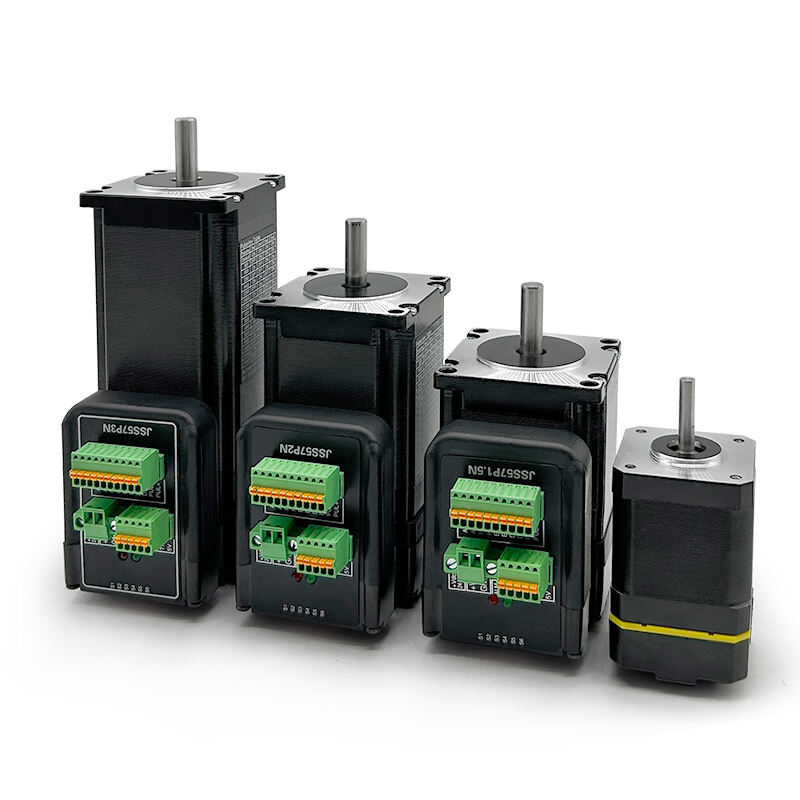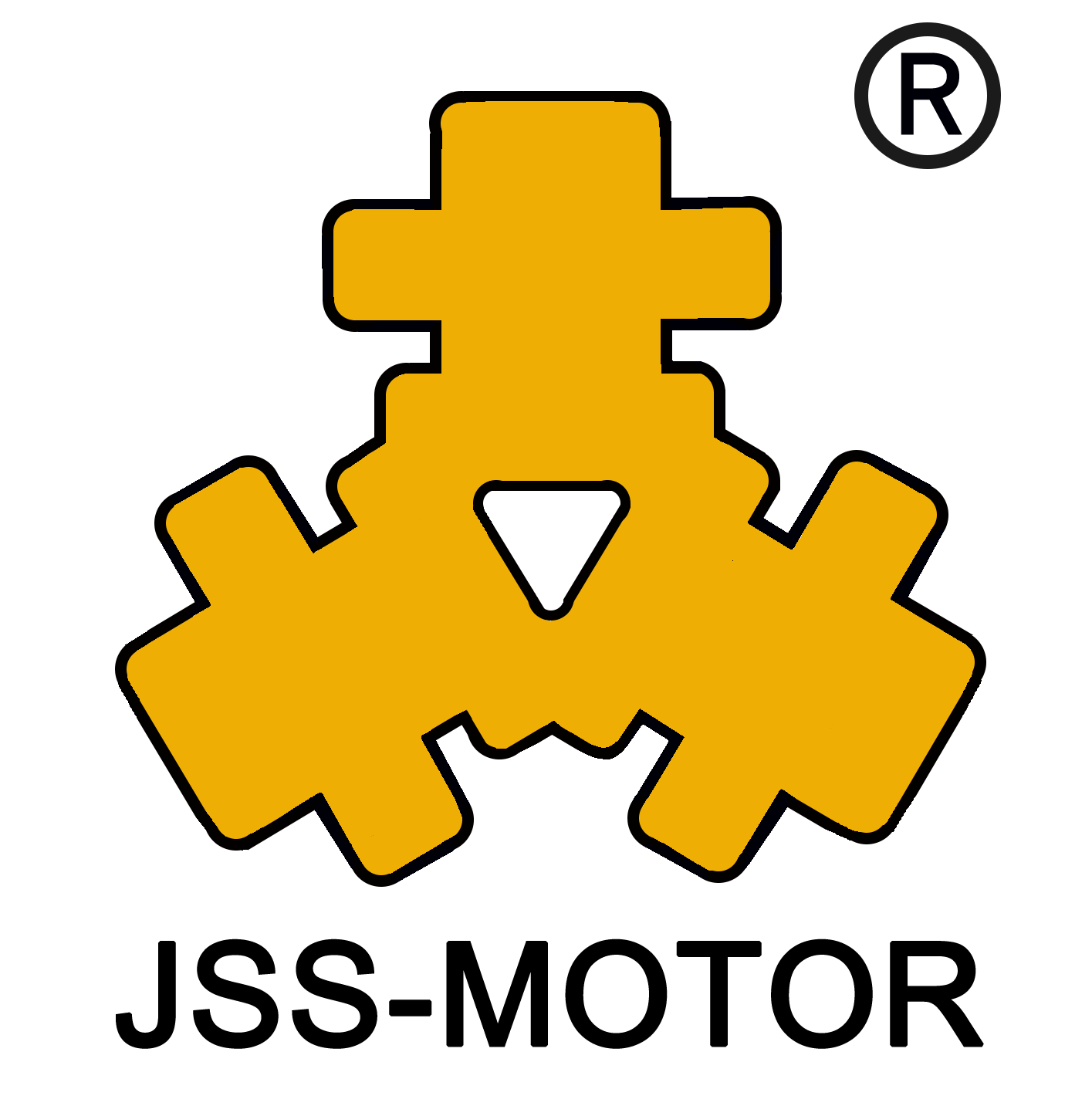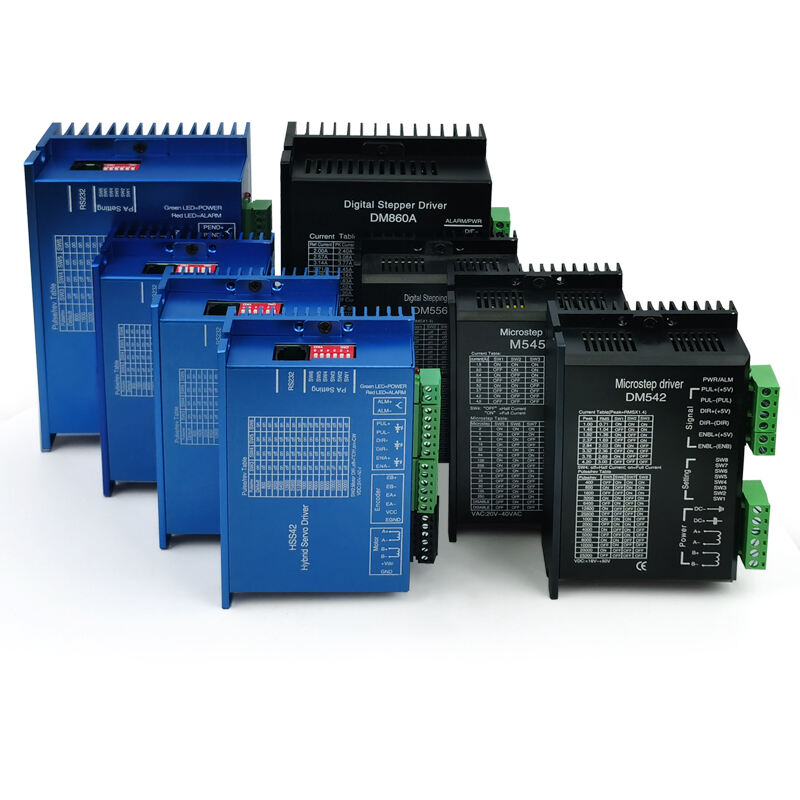Vad Är Huvudfunktionerna För En Stegmotorstyrning?
Introduktion till stegmotorsystem
Stegmotorer används ofta i applikationer som kräver exakt kontroll av position, hastighet och rotation. Till skillnad från konventionella motorer som roterar kontinuerligt när de är strömförande, rör sig stegmotorer i diskreta steg, vilket gör att de kan uppnå exakt positionering utan behov av komplexa återkopplingssystem. Stegmotorer kan dock inte fungera effektivt om de ansluts direkt till en strömförsörjning. De kräver en gränssnittsenhet som omvandlar styrsignaler till lämpliga ström- och spänningsmönster för motorlindningarna. Den här kritiska komponenten kallas stepparmotor .
Stegmotorns drivkrets fungerar som en bro mellan styrsystemet, till exempel en mikrostyrenhet eller CNC-styrenhet, och motorn själv. Utan drivkretsen skulle en stegmotor inte kunna ta emot korrekt sekvenserade signaler, ännu mindre ha den strömreglering som krävs för att fungera tillförlitligt under varierande belastningar och hastigheter. Att förstå de huvudsakliga funktionerna hos en stepparmotor hjälper till att välja rätt en för specifika applikationer och säkerställer systemets prestanda.
Vad är en stegmotorstyrdator?
En stegmotordrivare är en elektronisk enhet som är utformad för att styra rörelsen hos en stegmotor genom att sända elektriska pulser i en specifik sekvens. Varje puls motsvarar ett steg, och drivaren bestämmer motorns riktning, hastighet och vridmomentegenskaper genom att reglera tiden och amplituden för dessa pulser. Moderna drivare innehåller sofistikerade funktioner såsom strömbegränsning, mikrosteg och skyddskretsar som förbättrar prestanda och säkerhet.
Huvudfunktioner för en stegmotordrivare
Effektförstärkning
Styrningssystem som mikrostyrkor, PLC:er eller datorer genererar låg-effektsignaler som inte direkt kan driva motorn. En av de kärn funktioner som stegmotordrivhjulet har är att förstärka dessa styrsignaler till högre ström och spänning som motorns lindningar kräver. Till exempel kan en mikrostyrka endast leverera några milliampere vid 5 volt, medan motorn kan behöva flera ampere vid 24 volt eller högre. Drivhjulet utför denna förstärkning tillförlitligt och effektivt.
Signalsekvensering
Stegmotorn fungerar genom att mata spolarna i en exakt sekvens. Stegmotordrivhjulet genererar dessa sekvenser baserat på inmatningspulser från styrenheten. Beroende på önskad rörelse kan drivhjulet mata spolarna i fullsteg, halvsteg eller mikrostegläge. Rätt sekvensering säkerställer jämn rotation, exakt positionering och effektiv momentanvändning.
Strömreglering
Strömreglering är en annan viktig funktion hos en stegmotordrivare. Om strömmen inte regleras kan motorlindningarna överhettas, vilket minskar effektiviteten och livslängden. Drivare använder ofta chopperkretsar eller PWM-teknik (pulskvotsmodulering) för att upprätthålla en konstant ström även när spänningen eller belastningen ändras. Strömreglering gör det också möjligt att uppnå högre vridmoment vid låga hastigheter och stabil prestanda över ett brett applikationsområde.
Mikrosteg
Mikrosteg är processen att dela upp ett fullt motorsteg i mindre delar genom att styra strömförhållandet mellan motorlindningarna. En stegmotordrivare möjliggör mikrosteg genom att generera jämna sinusformade strömformade vågor snarare än plötsliga fyrkantsvågor. Detta minskar vibrationer, brus och mekanisk resonans och ger mer exakt positionering och jämnare rörelse. Mikrosteg är särskilt viktigt i applikationer som 3D-utskrift, CNC-bearbetning och robotik, där precision är avgörande.

Riktningsskontroll
Föraren tolkar riktade insignalerna och justerar spolarnas strömförsörjningsordning därefter. Genom att ändra sekvensen av strömmens flöde, styr stegmotorns förare om motorn roterar medurs eller moturs. Den här funktionen möjliggör mångsidig rörelsekontroll i automatiserade system.
Hastighetsreglering
Hastigheten bestäms av frekvensen hos ingående pulser som skickas till föraren. Stegmotorns förare översätter denna frekvens till rotationshastighet samtidigt som tillräckligt vridmoment säkerställs för att hantera laster. Många förare innehåller också accelerations- och inbromsningskontroll för att förhindra att steg tappas bort eller motorstopp vid snabba hastighetsförändringar.
Vridmomentshantering
Vridmomentets storlek beror på den ström som tillförs till lindningarna. En stegmotorsförare hanterar vridmomentet genom att exakt reglera strömmen, vilket säkerställer tillräcklig kraft för att övervinna laster utan att överhettas. Avancerade förare kan dynamiskt justera vridmomentsnivåerna för att balansera prestanda med energieffektivitet, särskilt i viloläge.
Skyddsfunktioner
Stegmotordrivare innehåller flera skyddsfunktioner för att skydda både drivaren och motorn. Överströmsskydd förhindrar skador orsakade av excesiv strömförbrukning, medan termisk avstängning skyddar mot överhettning. Överspänningsskydd och underspänningsskydd säkerställer stabil drift under varierande spänningsförhållanden. Dessa säkerhetsfunktioner är avgörande för att förlänga livslängden på både motorn och drivaren.
Gränssnitt mot styrsystem
En annan viktig funktion hos stegmotordrivaren är att fungera som gränssnitt mellan styrelektroniken på högre nivå och motorn. Drivare tar emot steg- och riktningssignaler från styrenheter och omvandlar dem till exakta motorrörelser. Vissa avancerade drivare har också kommunikationsgränssnitt såsom UART, CAN eller Ethernet, vilket möjliggör integrering i komplexa automationssystem.
Energieffektivitet
Moderna stegmotorstyrningar är utformade för att optimera energianvändningen genom att minska strömförbrukningen under inaktivitet och anpassa effekten dynamiskt. Denna funktion hjälper till att förlänga motorns livslängd, minska värmeutvecklingen och minimera energiförbrukningen i kontinuerliga driftsmiljöer.
Användningsområden för stegmotorstyrningar
3D-utskrift
I 3D-skrivare kontrollerar stegmotorstyrningar de exakta rörelserna hos skrivarens huvuden och byggplattformar. Mikrostegsfunktionen säkerställer jämn extrudering och exakt lagerplacering.
CNC-maskiner
CNC-fräsar, borrningsmaskiner och svarvmaskiner är beroende av stegmotorstyrningar för exakt verktygspositionering. Förmågan att hantera vridmoment och hastighet under varierande belastningar är avgörande för bearbetningsprecision.
Robotik
Robotiksystem kräver samordnad rörelse över flera axlar. Stegmotorstyrningar gör det möjligt för robotar att röra sig smidigt och exakt, ofta i kompakta och dynamiska miljöer.
Medicinsk utrustning
Enheter som avbildningsmaskiner och laboratorieautomatiseringsverktyg använder stegmotordrivere för kontrollerad rörelse, vilket säkerställer precision och tillförlitlighet i känsliga applikationer.
Industriell Automation
I transportbänd, förpackningsmaskiner och monteringslinjer säkerställer stegmotordrivere konstant hastighet och positionering, vilket bidrar till effektivitet och produktivitet.
Framtida trender inom stegmotordriverteknologi
Framsteg inom elektronik leder till smartare stegmotordrivere som integrerar AI-assisterad kontroll, avancerad diagnostik och integrering av realtidsfeedback. Hybridsystem som kombinerar stegmotorns precision med servoliknande feedback blir allt vanligare och åtgärdar traditionella begränsningar såsom minskad vridmoment vid höga hastigheter. Dessutom kommer trenden mot miniatyrisering och energieffektivitet ytterligare utöka användningen av stegmotordrivere i bärbara och batteridrivna enheter.
Slutsats
Stegmotordrivhjulet är hjärtat i alla stegmotorsystem och utför nödvändiga funktioner som möjliggör säker, effektiv och exakt rörelsestyrning. Dess huvudsakliga uppgifter inkluderar effektamplifiering, signalsekvensering, strömreglering, mikrostegning, riktning- och hastighetskontroll, momenthantering, skydd samt integration med styrsystem. Dessa funktioner säkerställer att stegmotorer kan leverera tillförlitlig prestanda inom en mängd olika industrier, från tillverkningsindustrin och robotik till hälso- och sjukvård samt konsumentelektronik. Med fortsatt teknologisk utveckling kommer stegmotordrivhjul att spela en ännu viktigare roll i automatisering och precisionsrörelsesystem världen över.
Vanliga frågor
Vad är huvudsyftet med ett stegmotordrivhjul?
Dess huvudsyfte är att styra flödet av ström till stegmotorns lindningar och översätta styrsignaler med låg effekt till exakta rörelser.
Kan en stegmotor köras utan drivhjul?
Nej, stegmotorer kräver en drivmodul för att sekvensera elektriska signaler korrekt och reglera strömmen för säker drift.
Vad är mikrostegning i en stegmotorsdrivmodul?
Mikrostegning innebär att dela upp varje full motorsteg i mindre steg genom att använda kontrollerade strömförhållanden, vilket resulterar i jämnare rörelse och högre precision.
Hur styr en stegmotorsdrivmodul hastigheten?
Hastigheten styrs av inmatningspulsernas frekvens, som drivmodulen omvandlar till stegsekvenser för motorn.
Varför är strömreglering viktig i en stegmotorsdrivmodul?
Strömreglering förhindrar överhettning, säkerställer tillräcklig vridmoment och förlänger livslängden på både motorn och drivmodulen.
Har stegmotorsdrivmoduler olika skyddsfunktioner inbyggda?
Vanliga skydd omfattar överström, termisk avstängning, överspänning och underspänningsskydd.
Skiljer sig stegmotorsdrivmoduler åt för unipolära och bipolära motorer?
Ja, unipolära och bipolära motorer kräver olika koppling och strömstyrningsstrategier, och drivkretsar är utformade därefter.
Kan stegmotordrivkretsar kommunicera med moderna styrsystem?
Ja, många avancerade drivkretsar stöder gränssnitt som UART, CAN eller Ethernet för integrering i automatiserade system.
Vilka branscher använder mest stegmotordrivkretsar?
De används omfattande inom 3D-printning, CNC-bearbetning, robotik, medicintekniska apparater och industriell automation.
Hur utvecklas framtiden för stegmotordrivkretsar?
Framtidens drivkretsar kommer att integrera smartare regleralgoritmer, förbättrad energieffektivitet, återkoppling och miniatyriserade konstruktioner för bredare tillämpningar.
Innehållsförteckning
- Introduktion till stegmotorsystem
- Vad är en stegmotorstyrdator?
- Huvudfunktioner för en stegmotordrivare
- Användningsområden för stegmotorstyrningar
- Framtida trender inom stegmotordriverteknologi
- Slutsats
-
Vanliga frågor
- Vad är huvudsyftet med ett stegmotordrivhjul?
- Kan en stegmotor köras utan drivhjul?
- Vad är mikrostegning i en stegmotorsdrivmodul?
- Hur styr en stegmotorsdrivmodul hastigheten?
- Varför är strömreglering viktig i en stegmotorsdrivmodul?
- Har stegmotorsdrivmoduler olika skyddsfunktioner inbyggda?
- Skiljer sig stegmotorsdrivmoduler åt för unipolära och bipolära motorer?
- Kan stegmotordrivkretsar kommunicera med moderna styrsystem?
- Vilka branscher använder mest stegmotordrivkretsar?
- Hur utvecklas framtiden för stegmotordrivkretsar?

